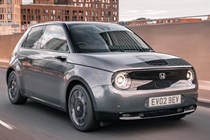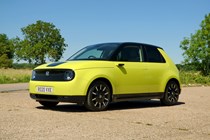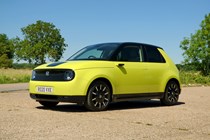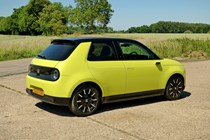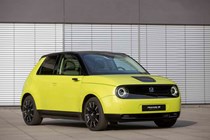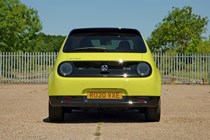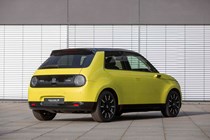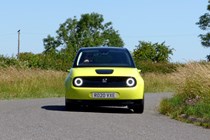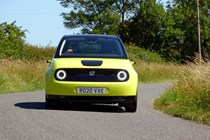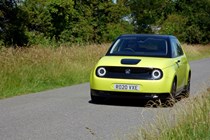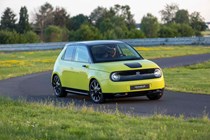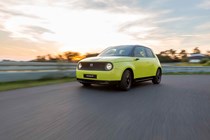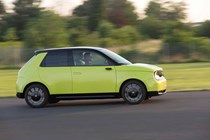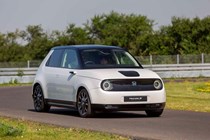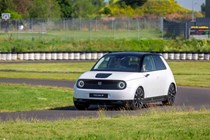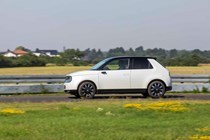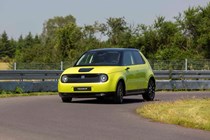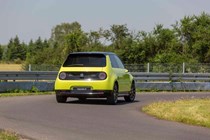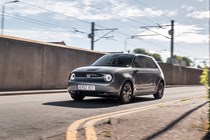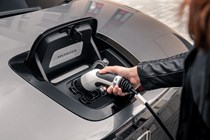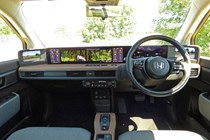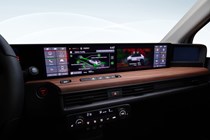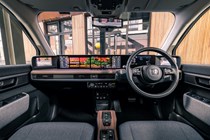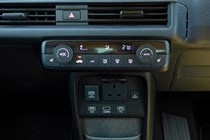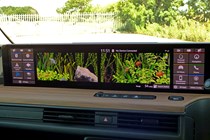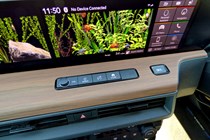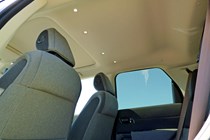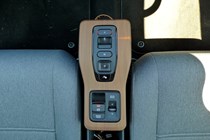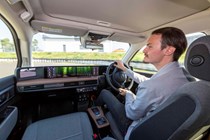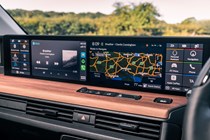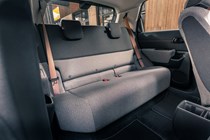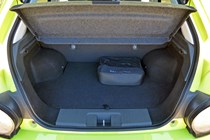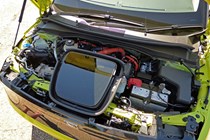
Honda e engines, drive and performance
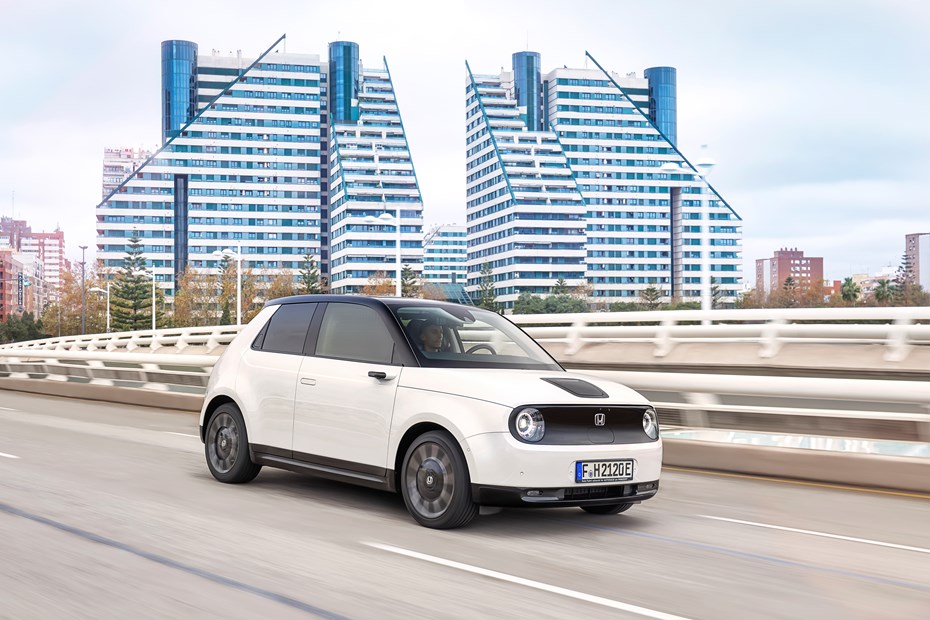
- Two e-motor options in the Honda e
- Choose from one of two power outputs
- Zippy and refined in town, mature out of it
What power options are there?
The engine – or rather, electric motor – in the Honda e is available with two power outputs. The entry-level model has 136hp while the more powerful option has 154hp – both ample outputs for such a small car. With identical torque figures of 315Nm, performance and nippiness around town are difficult to tell between the two.
Our main impression is that the e is definitely built for city living. The claimed 136-mile range isn’t that large, considering a car like the Renault Zoe is capable of almost double that. It’s on a par with the MINI Electric, but that’s more of a burn on MINI than a win for Honda… neither is very impressive, considering their purchase price.
There’s an instant surge of acceleration when you put your foot down (great for nipping around town), and there’s a Sport mode to further add to the excitement, but like other electric cars the e begins to run out of puff at high speeds. That said, it really doesn’t struggle to get up to motorway speeds like some city cars can, and once you’re there it doesn’t feel like it’s out of its depth.

That instantly available torque will make you the winner of many traffic light drag races, but remember every prod of the throttle will dent your precious range. Still, it feels faster than a Renault Zoe and about as quick as a Nissan Leaf. For the 136hp motor, the 0-62mph is over within 9.0 seconds, while the more powerful model takes 8.3 seconds.
Instead, keep the Honda e in normal mode and eke out every kilowatt hour. It’s designed for urban driving, and feels its best when left in its normal driving mode. There’s also a ‘Single Pedal Control’ function, much like that of the Nissan Leaf’s e-Pedal, which allows for far stronger brake regeneration when lifting off the throttle – perfect for low-speed driving. It’s so strong you can effectively drive around town and not need to touch the brake pedal. It also stops itself creeping forwards in this mode.
Regenerative braking is strong enough to activate the brake lights. When it’s not switched on, you can adjust how strong the e-braking is via paddles on the steering wheel, as you can in many other battery electric vehicles and plug-in hybrids.
What’s it like to drive?
- Honda e steering is very light
- Visibility is excellent all-round
- It’s a car for urban environments
As for handling, the e resists body roll and impresses with its balanced pedal and steering weights – something many electric cars struggle with; too often, EVs feel too light and uncommunicative to drive. They can sometimes feel like you’re driving around an appliance, rather than a car.
Honda claims its sophisticated suspension configuration was designed to be more refined than that of a Leaf or a BMW i3, and over multiple Parkers road tests, we can confirm the Honda e is surprisingly composed regarding the way it handles lumps and bumps in the road.
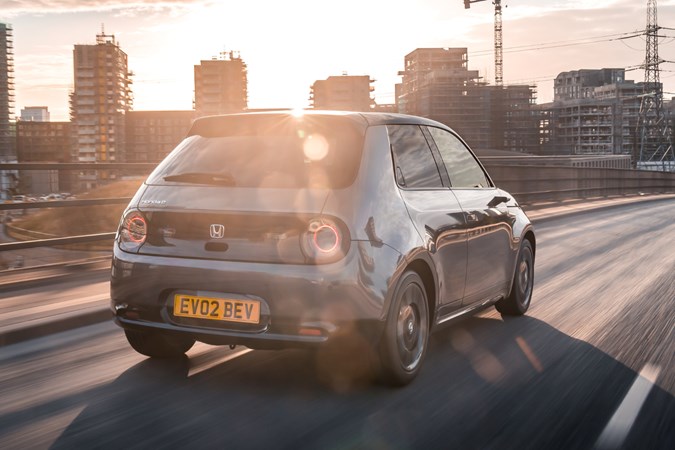
Some surfaces can make it feel a little fidgety, something that afflicts many short cars with large-ish wheels, but the e manages to deal with bumps very well. The sound and vibrations don’t come crashing through the cabin, and it doesn’t become unsettled and wayward. It feels very grown up indeed.
The e also has an impressively tight turning circle thanks to its rear-wheel drive layout; with no engine under the bonnet, the front wheels have more room to turn – great for parking and sharp U-turns in town.


